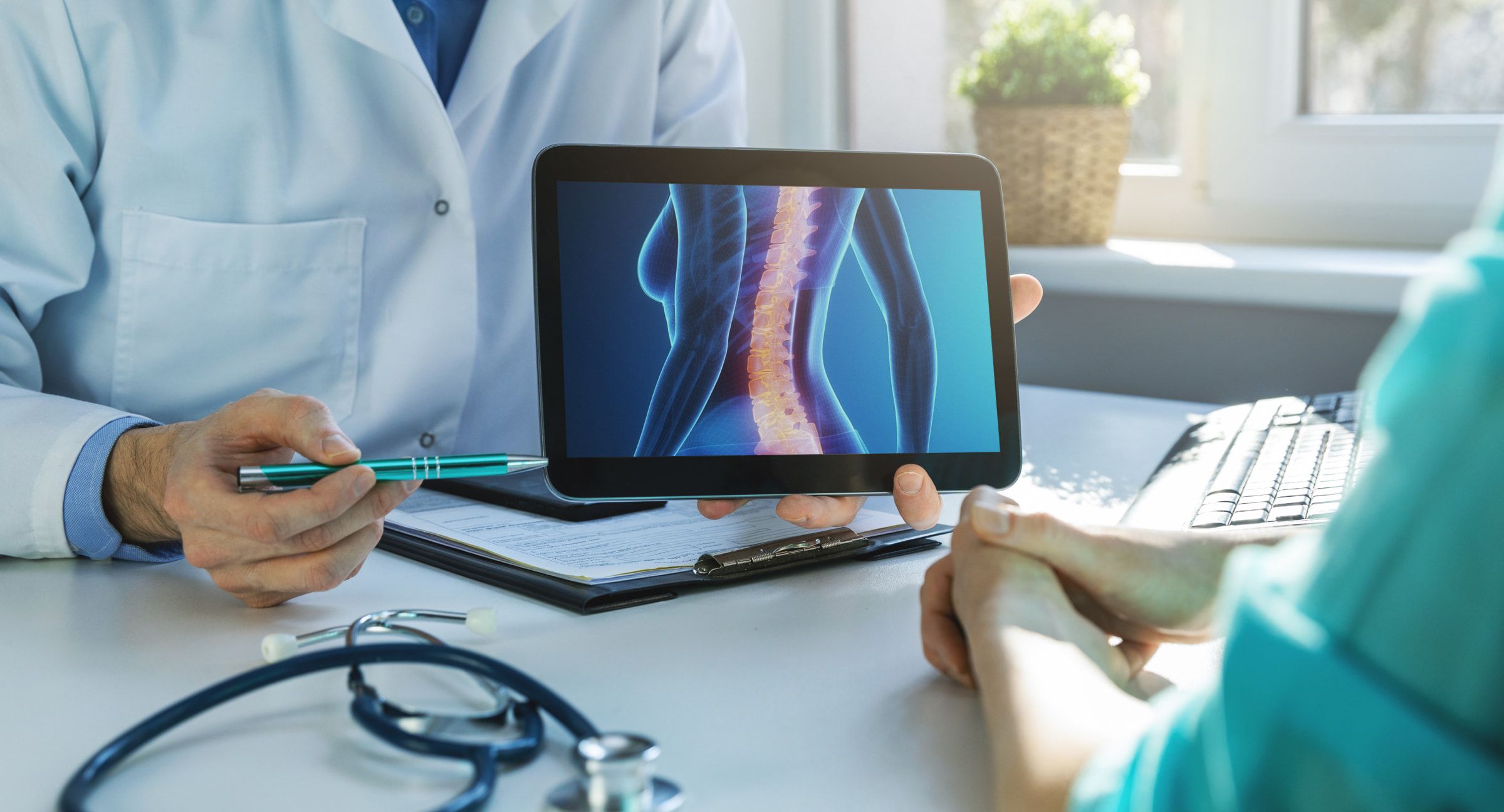- Injuries & Treatment
Can a Chiropractor Fix a Herniated Disc? What You Need to Know

Almost half the working population in the United States cite back pain as a reason for taking sick leave throughout the year. In total, this accounts for more than 264 million days of lost work.
At some point in your life, you're most likely to suffer from some form of back pain. Whether it's a minor strain or a herniated disc -- back pain is extremely common.
But, can a chiropractor fix a herniated disc or do you require a more serious form of treatment? Find out in this blog...
What Happens When You Herniate a Disc?
The discs between your spinal vertebrae act as a spinal primer. They add cushioning between the bones of your spine, help to stabilize the spine and allow for full range-of-motion.
These discs also create space within the spine for your spinal nerves to exit the spinal column and travel to the rest of the body i.e. your arms, legs, and extremities.
Slipping a Disc
When you herniate a disc in your spine it can either be caused by something as simple as wear and tear or a sudden injury. This back injury is also known as a slipped or ruptured disc.
Physiologically, the soft material at the center of the disc pushes through a crack in the outer ring of the disc. This escaped material then presses against spinal nerves, causing shooting back or neck pain. This pain and other referred symptoms can travel down the arms and legs, too.
While most slipped discs occur in the lower back (lumbar spine), they can also happen in the neck. Common symptoms of a herniated disc include:
- Shooting pan in the back or neck
- Referred pain that travels down the arms and legs
- Numbness or tingling in the arms or legs
- Weakened muscle strength in the arms or legs
However, it's worth noting that the most obvious sign of a herniated disc is not always direct pain in the back and neck. A herniated disc often presents with intense pain in the thigh or buttocks or arm and shoulder.
How Can a Chiropractor Fix a Herniated Disc?
It's important to note that a chiropractor can help address the symptoms of herniated disc first. Once your pain is under control, other therapies can be applied to address the root of the problem.
But first thing's first, your chiropractor will go over your medical history, conduct a physical exam, and perform neurological and orthopedic tests. During the orthopedic and neurological tests, your chiropractor will look for the following:
- Your reflex response rate -- are your reflexes working as they should be?
- A loss of muscle strength or muscle wasting
- A loss of nerve sensation
If needs be, your chiropractor will order an MRI or x-ray of your spine to help with diagnosing the severity of a herniated disc.
Spinal Evaluation
Your spine is a very complex, fine-tuned structure within the body. This means that if one area of your spine is affected, this can influence other parts of your spine, too. Your chiropractor will do a thorough evaluation of the overall function of your spine, even if your pain is only located in your lower back.
Once your spine has been fully evaluated, your chiropractor will be able to properly determine the extent of a disc injury. Ultimately, this will determine your course of treatment.
When Chiropractic Care Cannot Help
There are certain instances that determine whether you're a good candidate for chiropractic care or not.
If you are a candidate that suffers from cauda equina syndrome -- a loss of bladder or bowel control associated with a disc injury, chiropractic care may not help. You will generally be referred for immediate medical care.
If you display an advanced loss of muscle strength or poor reflex quality, you will be referred to a spine surgeon for further treatment.
Common Chiropractic Treatments for Herniated Discs
If your chiropractor is able to diagnose a standard herniated disc case, then they will develop a specific treatment plan to help you. This plan is tailored to your specific needs to ease the pain. It includes spinal adjustments, manual therapy, and therapeutic exercises.
1. The Flexion-Distraction Technique
This a common form of therapy used to address and treat the symptoms of a herniated disc. This technique involves a specialized table that helps to stretch out the spine, also known as ''distraction''. This technique isolates the area and slightly flexes the spine using a pumping rhythm.
Essentially, it's this pumping rhythm that encourages the center of the disc to return to a more central position. Flexion-distraction is also known to improve the height of the spinal disc.
Overall, this therapy is helpful because it helps to move the disc away from the nerve. It also reduces inflammation of the nerve root and any other associated inflammation.
2. A Spinal Decompression Plug
More formally known as interspinous spacers (ISS), a spinal ''plug'' is a far less invasive strategy when compared to open decompressive surgery. Two FDA-approved ISS spacers include the Coflex and Superion devices.
Spinal plugs are primarily used for the treatment of spinal stenosis. They provide a dynamic form of stability after decompression is performed, without the rigidity of spinal fusion, which is usually used to treat this condition.
3. Pelvic Blocking Techniques
This is a form of manual therapy using cushioned wedges. They are placed under each side of the pelvis, while gentle exercises are used to manipulate the spine. The purpose of this treatment is to allow for changes in the mechanics of the spine and draw your disc away from the nerve it's pressing on.
Expert Chiropractic Care in San Diego
Can a chiropractor fix a herniated disc? The Inner Balance Institute, voted the top chiropractor in San Diego, can help you along the way.
We have been providing chiropractic care to patients since 1997. We offer not only chiropractic care but physio treatments, spinal decompression and more.
Learn more about the specialized back pain treatments we offer...


